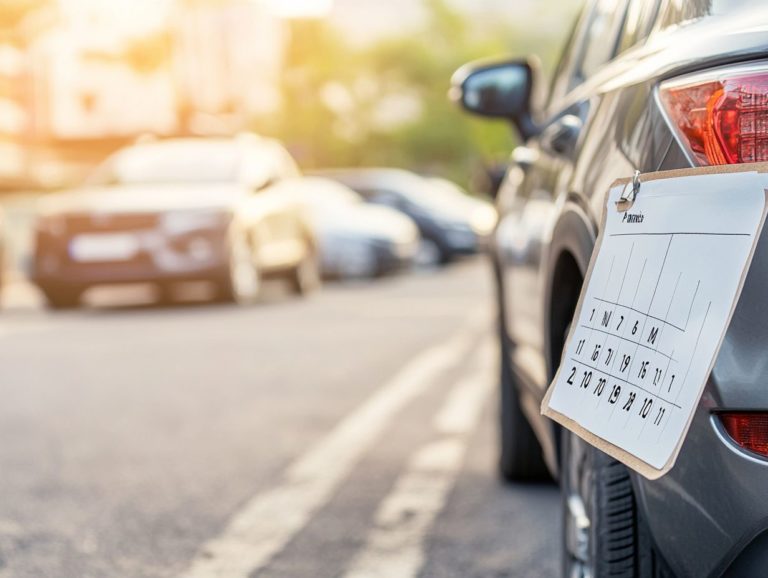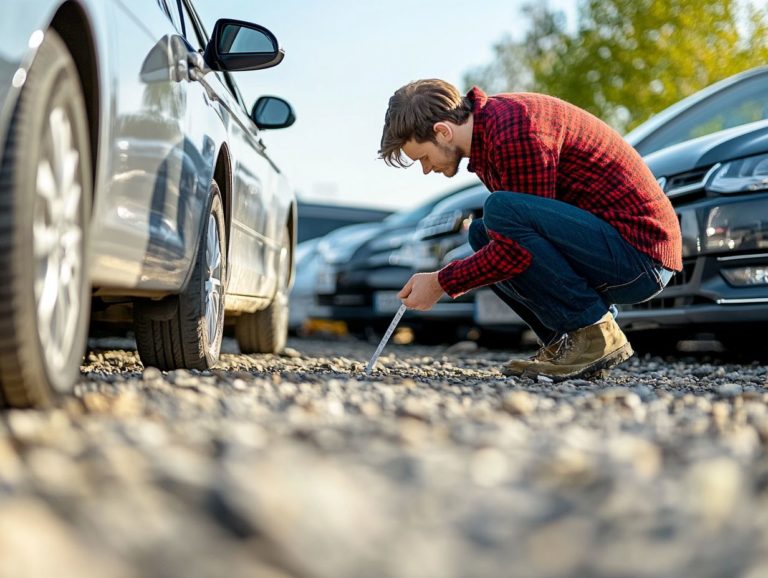What to Expect During a Used Car Inspection
Buying a used car can be both exhilarating and overwhelming. Making a wise investment is paramount. A thorough inspection of the vehicle is your strongest ally against potential missteps.
This guide shows why inspections matter and what to ask the seller. It highlights key areas to scrutinize during the inspection and points out red flags to watch for. Additionally, it offers direction on your next steps should you choose to proceed with the purchase.
Equip yourself with this comprehensive guide to secure your peace of mind and make an informed decision.
Contents
- Key Takeaways:
- Why a Used Car Inspection is Important
- Preparing for a Used Car Inspection
- What to Look for During the Inspection
- Red Flags to Watch Out For
- What Happens After the Inspection
- Frequently Asked Questions
- What should I expect during a used car inspection?
- How long does a used car inspection typically take?
- Will the technician check for any previous accidents or damage?
- What types of mechanical components will be inspected during the inspection?
- Do I need to be present during the used car inspection?
- What happens if the technician finds issues during the inspection?
Key Takeaways:
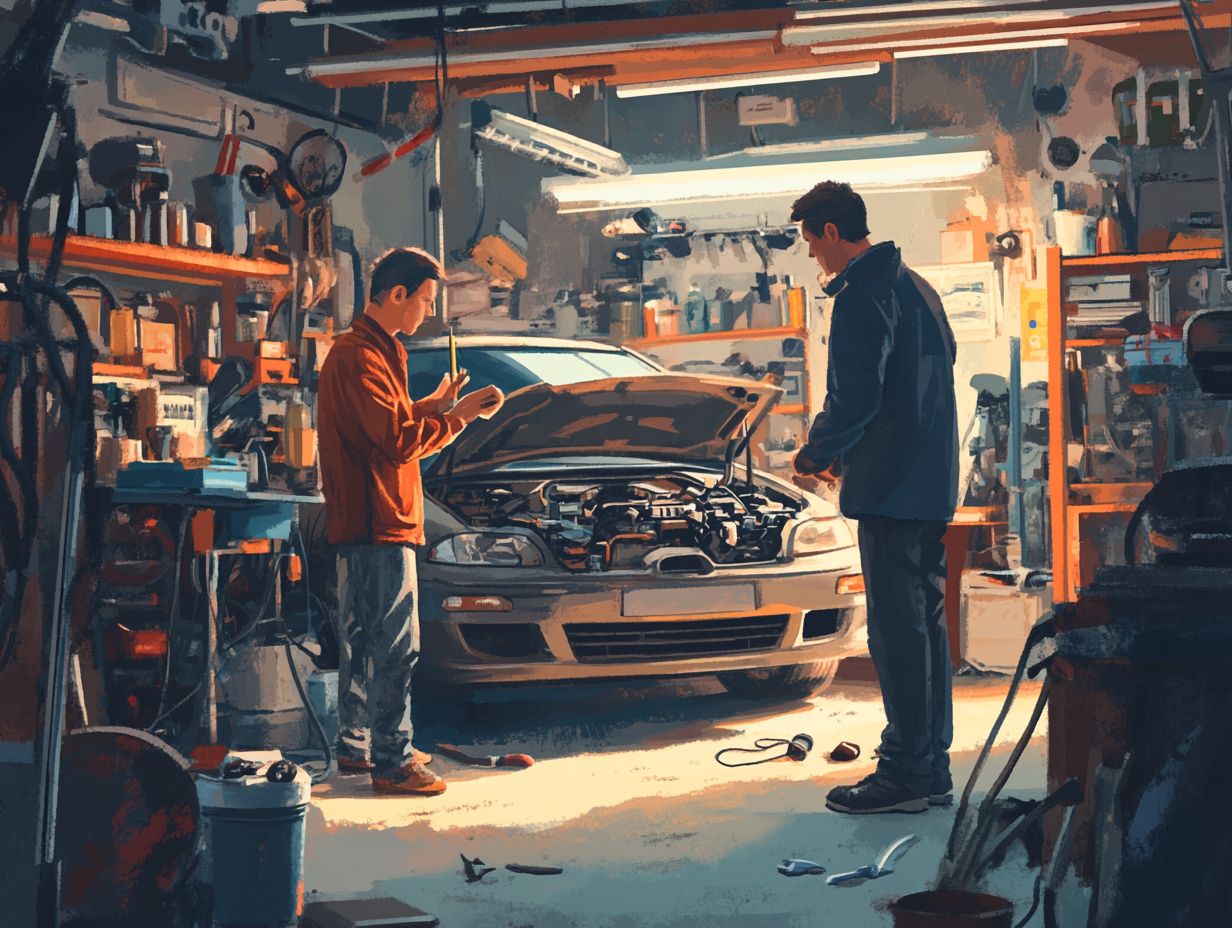
- A used car inspection is crucial for ensuring the safety and reliability of the vehicle you are considering purchasing.
- Be prepared for the inspection by bringing necessary documents and asking the seller important questions.
- During the inspection, pay attention to both the exterior and interior of the car, as well as under the hood and underneath the car.
Why a Used Car Inspection is Important
A comprehensive used car inspection is essential for you as a prospective buyer. It ensures that you re fully informed about the vehicle’s condition and offers peace of mind before you make that all-important purchase decision.
Hire a reputable dealership or independent mechanic to uncover potential issues that might not be obvious during a quick glance. This thorough pre-purchase inspection includes a careful check of the vehicle s history report, checks for safety recalls, and a detailed checklist that covers every aspect of both the exterior and interior.
Benefits of a Thorough Inspection
A thorough used car inspection presents you with a host of advantages, starting with a detailed inspection report that highlights major issues and evaluates the overall condition of the vehicle. This step clarifies the current state of the car and helps you anticipate future maintenance costs, allowing for more effective budgeting for repairs.
This process gives you the power to identify specific concerns, such as rust damage, which could significantly affect the vehicle’s longevity and safety. By assessing the condition of the tires, you can determine if immediate replacements are necessary, ensuring both a smoother ride and enhanced safety.
Examining safety ratings and critical features can provide leverage during price negotiations. Armed with these insights, you re in a stronger position to make informed decisions whether that involves opting for necessary repairs before the purchase or negotiating a fair price that accurately reflects the car’s true condition.
Preparing for a Used Car Inspection
Preparing for a used car inspection means you’ll want to gather essential documents and have a solid grasp of what to expect from a used car dealer during the process. This preparation ensures you’re making the most informed decisions possible.
Key items to have on hand include:
- Service records
- The vehicle title
- Any existing warranties
These documents offer valuable insights into the car s maintenance history and any past accidents. This underscores the importance of utilizing professional vehicle inspection services or consulting a trusted local mechanic for additional assurance.
With the right preparation, you’ll navigate the used car buying process with confidence and clarity.
What to Bring and Ask the Seller
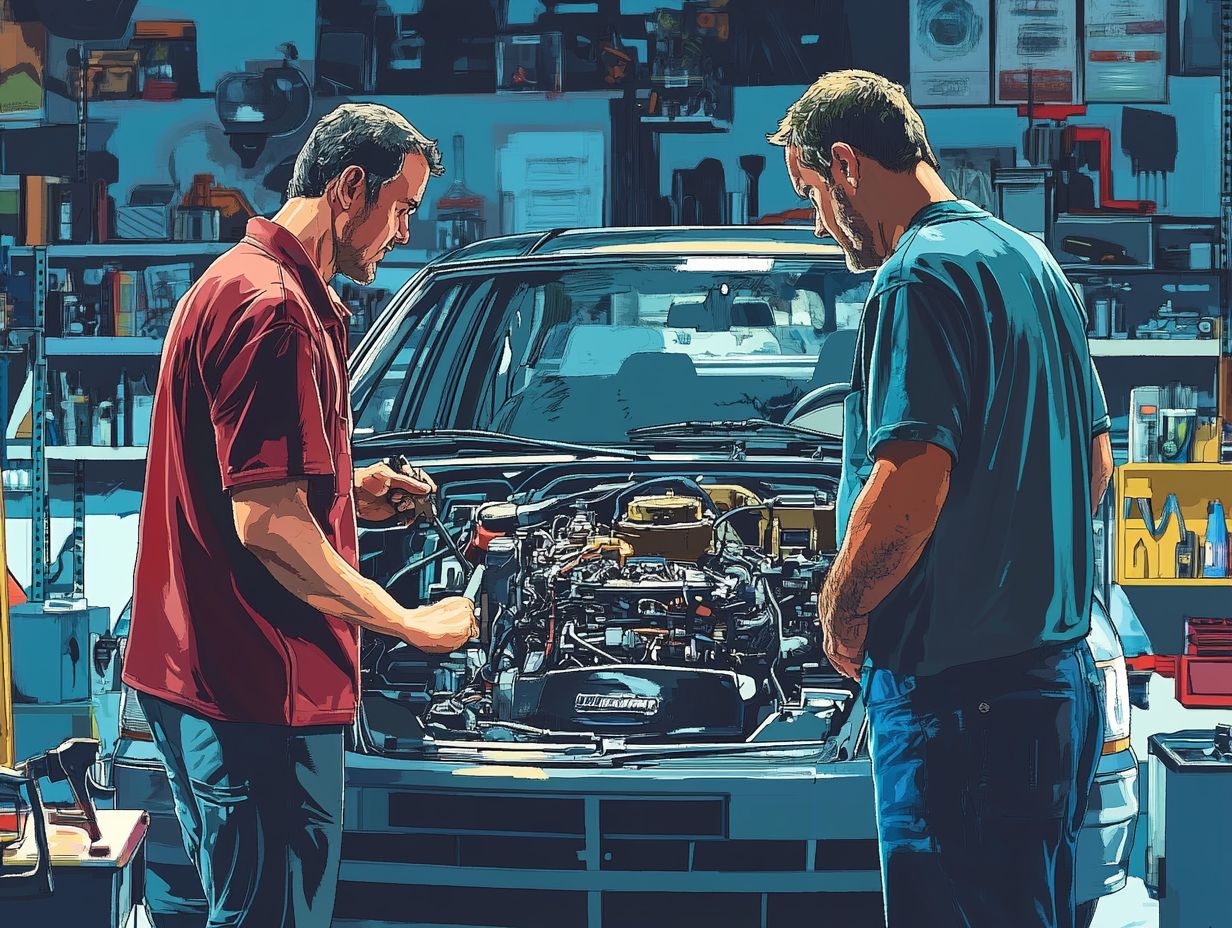
When you’re attending a used car inspection, it’s imperative to bring along key documents like service records, previous inspection reports, and any information regarding accident damage or warranty status. Engaging the seller in a conversation about the vehicle’s history, including its clean title status and any significant repairs, is essential for assessing the car’s reliability.
These documents not only help you identify potential red flags but also provide a robust foundation for informed negotiations. By carefully reviewing service records, you can gauge the maintenance habits of the previous owner and determine whether the car has received necessary repairs. Previous inspection reports offer valuable insights into past issues that may have persisted or worsened over time. Understanding a vehicle’s accident history can unveil hidden problems that might not be immediately visible.
Encouraging yourself to actively verify the claims made by the seller gives you the power to make sound decisions. This ultimately leads to a more satisfying purchase experience.
What to Look for During the Inspection
Get ready to dive into the details when inspecting a used car. Here s what you must check! It s essential to evaluate several key aspects meticulously.
You should look closely at the exterior condition, conduct a thorough interior inspection, and perform critical engine checks to confirm that the vehicle is in optimal working order.
By utilizing an inspection checklist, you can systematically assess each component and uncover any potential issues. A comprehensive test drive checklist provides insights into how the vehicle performs under real driving conditions, ensuring you make an informed decision.
Exterior and Interior Checks
Conducting thorough exterior and interior checks during a used car inspection is crucial for spotting visible damage or hidden issues that could compromise long-term reliability. Additionally, knowing what to look for in a used car test drive can help you assess the vehicle’s performance. You should pay close attention to rust damage, paint inconsistencies, and the overall condition of the vehicle’s body.
When inspecting the interior, ensure that you check the functionality of the dashboard and look for signs of wear and tear on the seats and upholstery. Moreover, examining door seals for any signs of wear can help prevent water leaks that might lead to mold or electrical issues.
Checking windows for cracks or improper sealing is essential for maintaining the car’s structural integrity. Don t overlook the air conditioning system; ensuring it operates effectively not only enhances comfort but also provides insights into the vehicle s maintenance history.
By focusing on these specific elements, you can spare yourself from unexpected repair expenses down the road. This meticulous approach aligns with reviewing safety recalls and the vehicle’s overall history, underscoring the importance of due diligence in making a wise investment.
Under the Hood and Underneath the Car
Don t wait until it s too late! Spotting potential issues now can save you big bucks later. Performing an engine check and inspecting underneath the car are critical steps in your used car inspection process.
These actions allow you to spot potential issues that could lead to significant maintenance costs down the road. By checking for error codes that indicate issues and evaluating the engine’s overall performance, you can reveal hidden problems that might escape notice during a standard inspection.
Common signs of wear think leaks, corrosion, and component integrity provide invaluable insights into the vehicle’s health. A thorough examination might even uncover subtle leaks that suggest failing gaskets or seals, which could escalate into costly repairs if left unaddressed. Corrosion on vital parts signals exposure to moisture and possible neglect, complicating the vehicle s reliability even further.
Given these factors, enlisting professional inspection services becomes essential. They possess the expertise to accurately diagnose these issues and offer detailed repair estimates. This informed approach gives you the power to make decisions that can save you from unexpected repairs and ensure your investment is a wise one.
Red Flags to Watch Out For
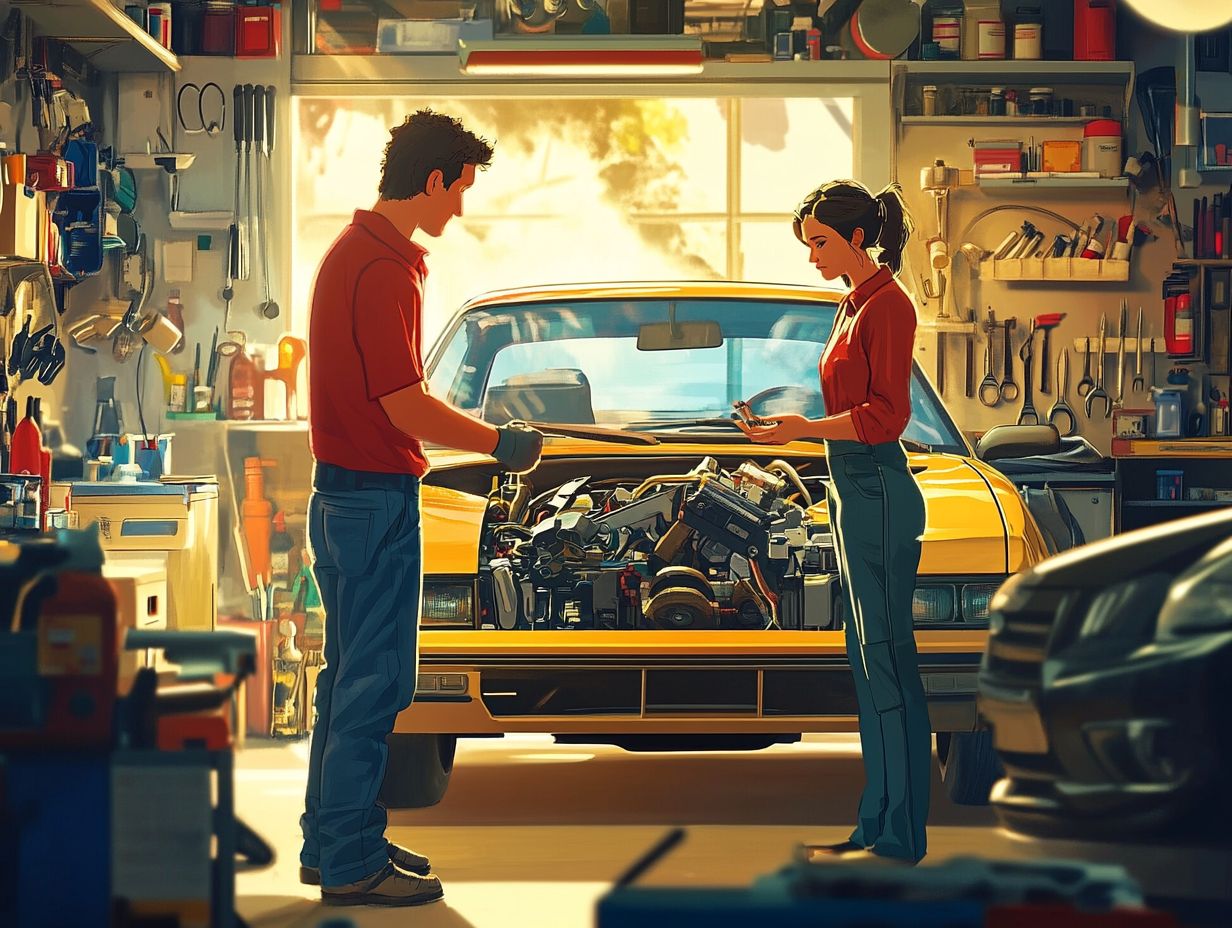
Be vigilant during a used car inspection. This can protect you from costly purchases.
Look out for signs of accident damage and inconsistencies in service records. These can point to problems you want to avoid.
Signs of Potential Issues
While test driving, watch for unusual vibrations or strange sounds. If the car feels sluggish, that’s a red flag.
Pay attention to engine misfires, which may cause rough idling or hesitation when you accelerate.
Watch for any odd steering behavior; this could indicate misaligned wheels or suspension issues.
Check the brakes as well. If they delay or make unusual noises, it s a sign to investigate further.
Conducting thorough diagnostic work will help you uncover any deeper issues. Correlate these findings with repair estimates. This helps you make informed decisions about your investment.
What Happens After the Inspection
Once you ve completed a used car inspection, carefully review the inspection report and contemplate your next steps. This may involve negotiating the purchase price based on the findings or deciding to walk away from the deal entirely.
By leveraging the inspection report, you can pinpoint necessary repairs and gather repair estimates. This empowers you to engage in informed discussions with the seller.
Next Steps for Purchasing or Negotiating
After the inspection, you ll face pivotal decisions about whether to purchase the vehicle or negotiate its price based on insights from the inspection services and vehicle history report.
Effective negotiation strategies often hinge on using the inspection report as your advantage, spotlighting any issues needing immediate repairs or hinting at deeper problems.
Presenting solid evidence regarding necessary maintenance can help you make a compelling case for a price reduction. Remain firm in your budget and expectations during discussions.
Employing professional inspection services strengthens your negotiating position and signals your serious commitment to making an informed purchase. This approach allows you to navigate negotiations more strategically, leading to a more favorable outcome.
Frequently Asked Questions
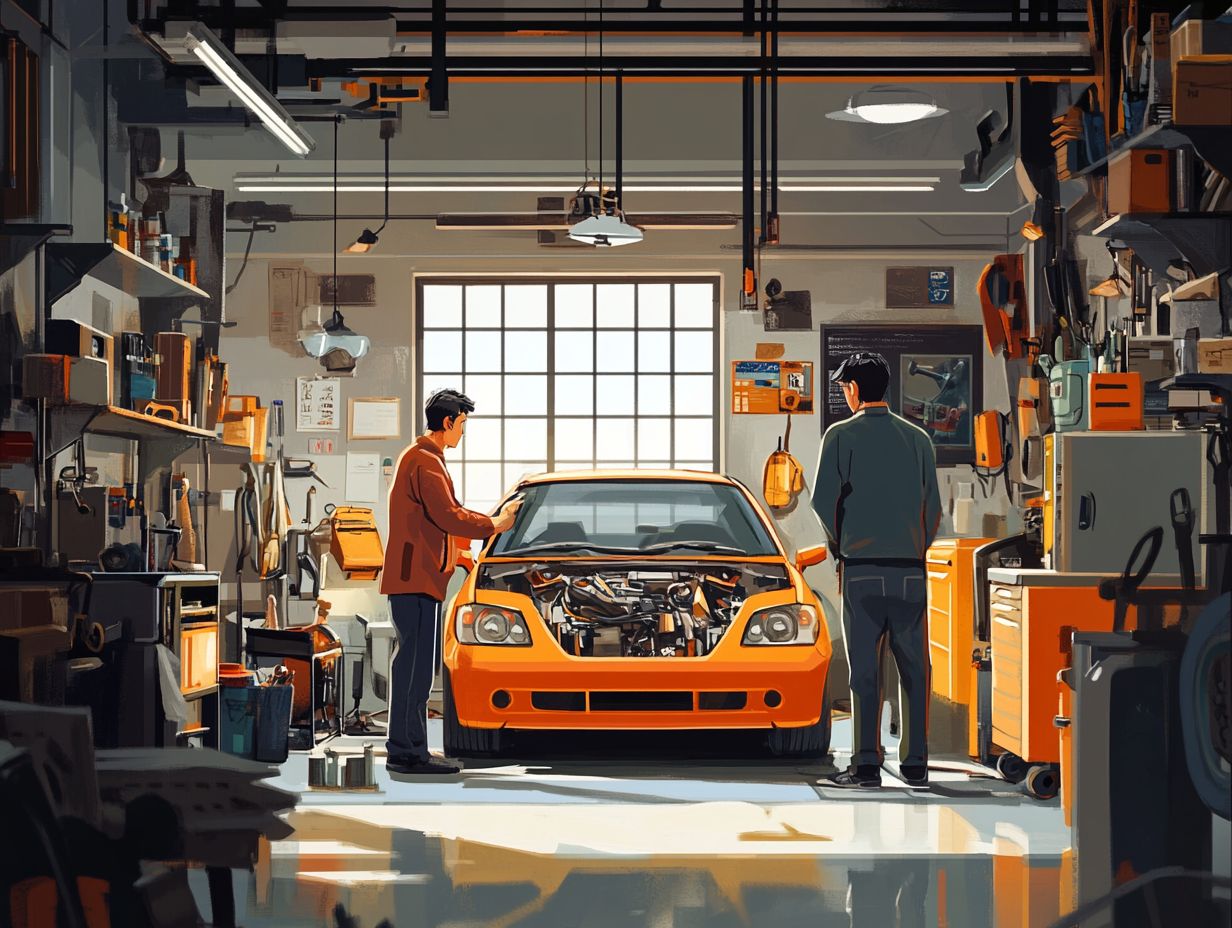
What should I expect during a used car inspection?
A trained technician will thoroughly check the vehicle’s exterior, interior, and mechanical parts for potential problems.
How long does a used car inspection typically take?
The length can vary based on the vehicle’s condition and the thoroughness of the technician. On average, it takes 1-2 hours.
Will the technician check for any previous accidents or damage?
Yes, the technician will look for signs of previous accidents or damage and check the vehicle’s history report to ensure it has a clean title.
What types of mechanical components will be inspected during the inspection?
The technician will inspect major components of the car, such as the engine, transmission, brakes, and tires. They will also look for leaks and signs of wear and tear.
Do I need to be present during the used car inspection?
While your presence isn’t required, it s a great opportunity to learn more about the car! You can ask questions and gain a better understanding of its condition.
What happens if the technician finds issues during the inspection?
If the technician finds any issues, they will provide you with a list of concerns. You can use this information to negotiate the price or decide if this car is the right choice for you.


